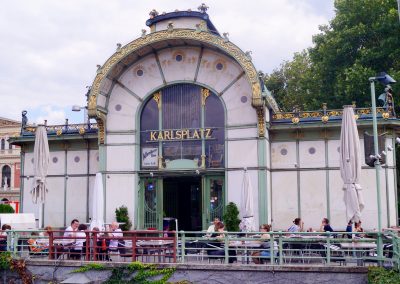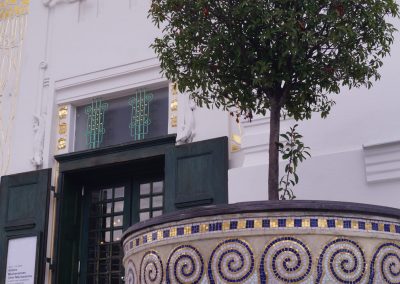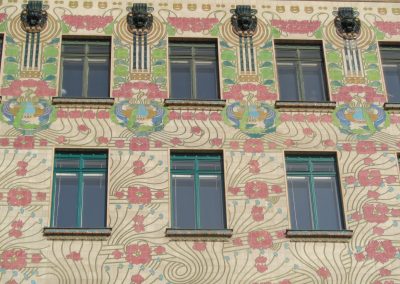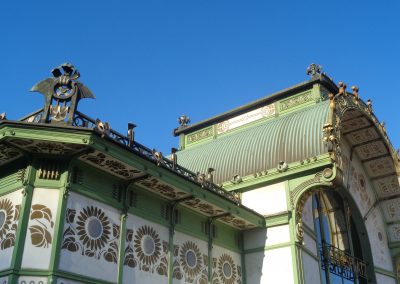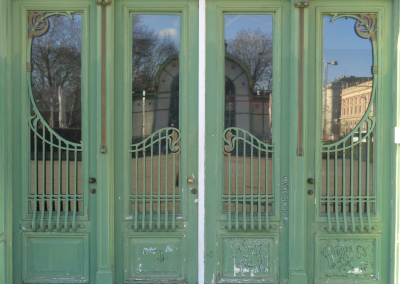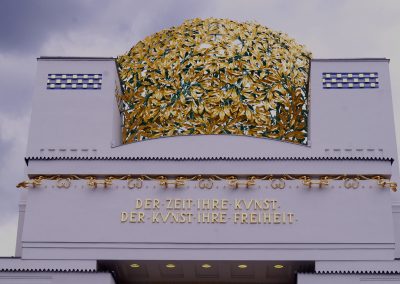1900 Vienna
Exploring the city’s multi-cultural history
1900 Vienna
Exploring the city’s multi-cultural history
Highlights
- Ringstraße: Elegant boulevard of Historicism
- Secession: Jugendstil and new ideas
- Otto Wagner: Urban railway stations and apartment buildings along the Wienzeile
In building Vienna’s Ringstraße, the Habsburg Monarchy celebrated itself. The elaborately decorated, stately buildings in neo-historical styles (called Historicism) attested to the glories of the past. Meanwhile, the city’s population was growing exponentially, surpassing 2 million. Huge infrastructure projects were undertaken, while social problems were ignored.
The new era was manifest most prominently in the arts. The young artists turned their backs on the tradition-bound arts academy and celebrated their “Holy Spring” in the Secession movement. Gustav Klimt and Otto Wagner, prominent artists of the Jugendstil era, became pioneers of the Modern age. In music, Gustav Mahler, followed by Arnold Schönberg and Alban Berg, led the change.
Meeting point: At the Schiller monument, Schillerplatz, 1010 Vienna
Tour ends: U-Bahn station Kettenbrückengasse, 1040 Vienna
About 2 hours
Tour incl. Klimts „Beethoven-Fries“ in the Secession
About 2,5 hours
Group size: up to 20 people
Tour starts at 230,- Euro.
Tour incl. Klimts „Beethoven-Fries“ in the Secession
Tour starts at 275,- Euro
Entrance fees are not included in the price of the tour.
End
Meeting point


